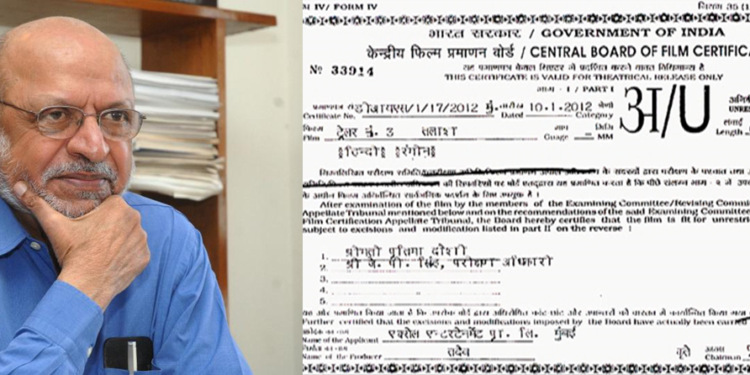In a vibrant democracy, there should be no censorship but rather the choice to opt away from entertainment experience. Our current moral code seems to be more influenced by Victorian England’s prudish outlook than our rather liberal values as evidenced by art, literature and architecture.
What we need is a rating system and a set of rules behind the rating system so that the rules define the rating (and not the govt at the time, not the “Marxist” mafia and definitely not religious/cultural sensibilities). The rating system should be defined by content suitability for age and should have implications on public broadcasts on television (prime time restrictions for certain rating categories and prominent display of category for viewers/parents).
Shyam Benegal – The new censor board chief
Shyam Benegal, an eminent director and screen writer, whose contributions to Indian cinema need a series of articles on their own to do justice, has been chosen by the govt. to develop a censorship approach.
Why do we need a rules based approach?
A rules based approach is transparent, easier to interpret and implement. It prevents alteration or changing interpretation by our dynamic political landscape. The rules based approach should be driven by freedom of speech/expression and not by fear of mobs. The rating categorization should seek to inform viewers of the content who can then choose to watch or not watch. Content against any religion or personalities including M.K. Gandhi should be in an apt rating bucket.
The rules based approach could consider factors such as violence, sexual content, nudity, language/abusive behavior, misogyny, and substance addiction.
Bans in this era of YouTube and hosting websites are ridiculous and in fact, provide free publicity forcing people to watch it.
Economic impact?
The rating categories should not be mere labels but also used to impact the economic value of content. For e.g. let’s consider violence against women. Many movies do have misogynistic overtones (rain drenched heroines still exist, “just” rape!) which need to be categorized into rating buckets suitable for 18+ even for a single scene. Such labels should have economic implications on TV/Satellite rights, advertisements, et cetera. A plausible gap in this approach could be where does this stop? How does one incorporate rules to differentiate nudity/sex scenes from misogyny? Should content against religion and culture be part of this adverse treatment? I would say no. But then this adverse selection can be exploited to curtail free speech too. These are hard questions for Shyam Benegal.
NC-17 ratings in the U.S. have had adverse economic impact on cinematic content due to regulations on advertising and refusal of movie theatre chains to host these films.
Many developed countries such as U.S., UK have this rating approach and research has indicated that it has been useful for parents/viewers to select movies based on content and age. The methodology and the pitfalls of such systems in other countries could serve as guidelines for India. The most critical portion of the implementation might be that it is not subject to political whims or “moral” mores of any group (majority or minority) and any such content is not banned. The judiciary should be able to arbitrate easily with a transparent set of rules.
Shyam Benegal is a definitely a good choice but he has tough challenges ahead. We wish Mr. Shyam Benegal all the best.
References:
- Classification and Rating rules. MPAA.


































